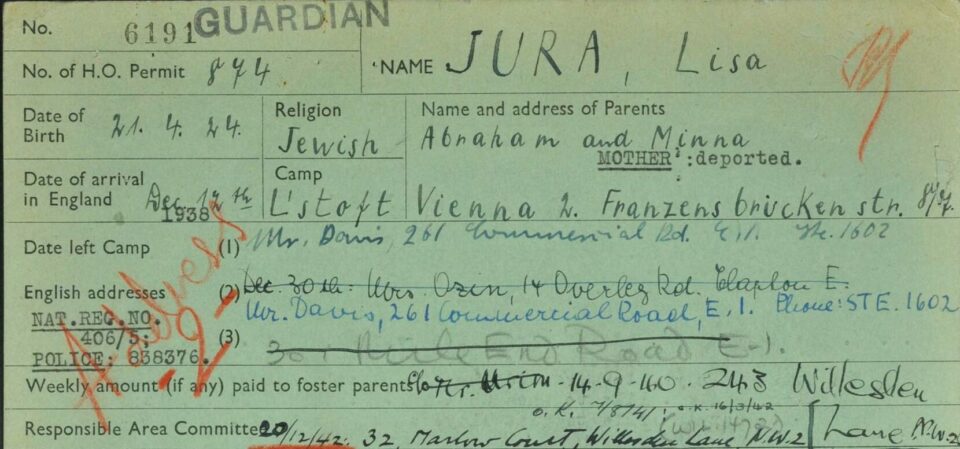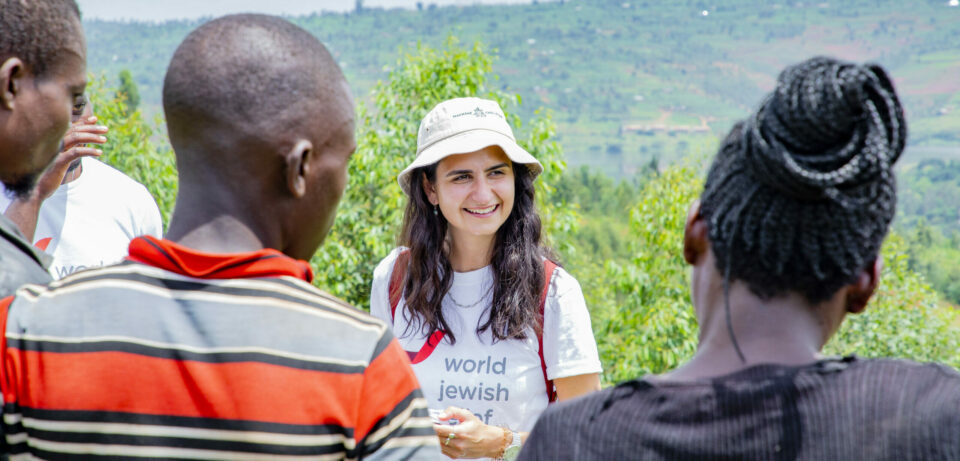9 November 1938 is embossed on the collective consciousness of the Jewish people. Kristallnacht was a major turning point for the future of European Jewry. Amidst the darkness of the atrocities that followed, a tiny chink of light emerged.
Following Kristallnacht, in November 1938, Anglo-Jewish leaders met with Prime Minister Neville Chamberlain to advocate for allowing German Jewish children to immigrate to the British Mandate for Palestine. Though Chamberlain did not like the idea, he mentioned the subject of children’s immigration to Great Britain at the next Cabinet meeting. After much debate he was persuaded to admit unaccompanied Jewish children.
The Kindertransport
Having secured Government support, the founders of the Central British Fund for German Jewry (CBF) – the precursor to World Jewish Relief – started to lay the groundwork for the rescue programme that came to be known as the Kindertransport. These men, including Simon Marks (founder of M&S) and Dr Chaim Weizmann, later to become the first President of Israel), launched a huge fundraising appeal. Several organisations came together to raise £545,000 (nearly £29 million today).
They also identified thousands of families across Britain to host Jewish children during the war years. They set up unused summer camps on England’s south coast to house young refugees waiting for homes and coordinated with Dutch organisations to transport children from Germany and Austria. By the outbreak of war, 9,354 children had been rescued from Nazi occupied Europe, 90% of them Jewish.
It’s a story frequently recounted – children travelling to Liverpool Street Station to meet their volunteer foster parents, clutching only one suitcase containing their most cherished possessions.
Lisa Jura’s story
Each child – including Lisa Jura – had their own extraordinary story. Lisa, who dreamed of becoming a concert pianist, was only 13 when she came over from Vienna on the Kindertransport. To pay for music lessons she first became a maid and then worked in a factory making army uniforms. The prodigal pianist soon earned a scholarship to the Royal Academy of Music in London.
After the war, she performed in France where she met her husband Michel Golabek. They moved together to the United States where they had two daughters, Mona and Renee.
Inspired by her mother, Mona became a concert pianist and performer. She has written and performed her mother’s story – The Pianist of Willesden Lane – around the world.
Mona attributes her mother’s life to World Jewish Relief: “Thank you World Jewish Relief. I will never be able to find the words to adequately express my gratitude for what your organisation did for my mother and what you do for the world”.
Mona was able to find out more information about her Lisa’s experience by finding her mother’s personal case file through World Jewish Relief’s Archives, which contain 35,000 individual case files.
The Pianist of Willesden lane
The Pianist of Willesden Lane returns to St James’ Theatre in London in September.





